A Complete Guide To Chaga Mushroom
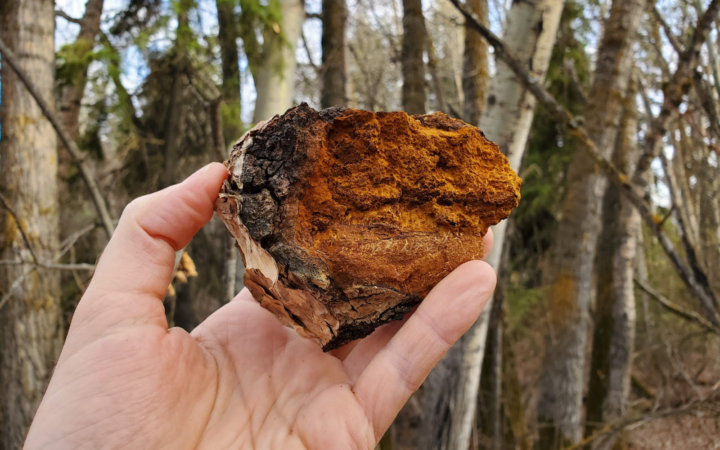
You might not think much of the Chaga Mushroom when you first see it in the forest. Unremarkable and a little unsightly, this mushroom oozes out of birch trees looking like charcoal, and is often disregarded as rot.
However, the Chaga Mushroom has such an incredible array of health benefits that it has been crowned as the “king of medicinal mushrooms.” Read on to learn about the ways Chaga can boost your immune system, protect your DNA, and much more.
Chaga Mushroom Benefits
Properly prepared extracts of the Chaga Mushroom have been reported to provide a variety of acute health benefits while supporting overall balance and wellness in the body.
1. Immune Support
Hot water extracts from has been used to modulate the immune system, improving both underperforming and overreacting immune responses in the body. This is especially helpful for boosting immunity during chemotherapy.
2. Anti-Inflammatory Potential
Studies show that extracts from the Chaga Mushroom have anti-inflammatory properties, helping to mitigate a number of ailments.
3. Potentially Anti-Cancer
Chaga extracts have been traditionally used as a folk medicine to treat cancer. Lab studies show that water extracts from Chaga are effective against human cancer cells (in vitro) and animal cells.
4. Lower Cholesterol
Compounds found in Chaga have been shown to breakdown LDL cholesterol, which can help to improve blood pressure.
5. DNA Protection
Chaga mushroom extract has shown the ability to protect cellular DNA from damage caused by free-radicals.
Health Benefits of Chaga
Research done in-vitro and in animals has shown extracts of Chaga to be potentially anti-inflammatory, anti-cancer, as well as contain powerful anti-oxidants, and many other beneficial compounds.
As with any natural medicine, more research and human studies need to be done to fully understand the benefits of this mushroom.
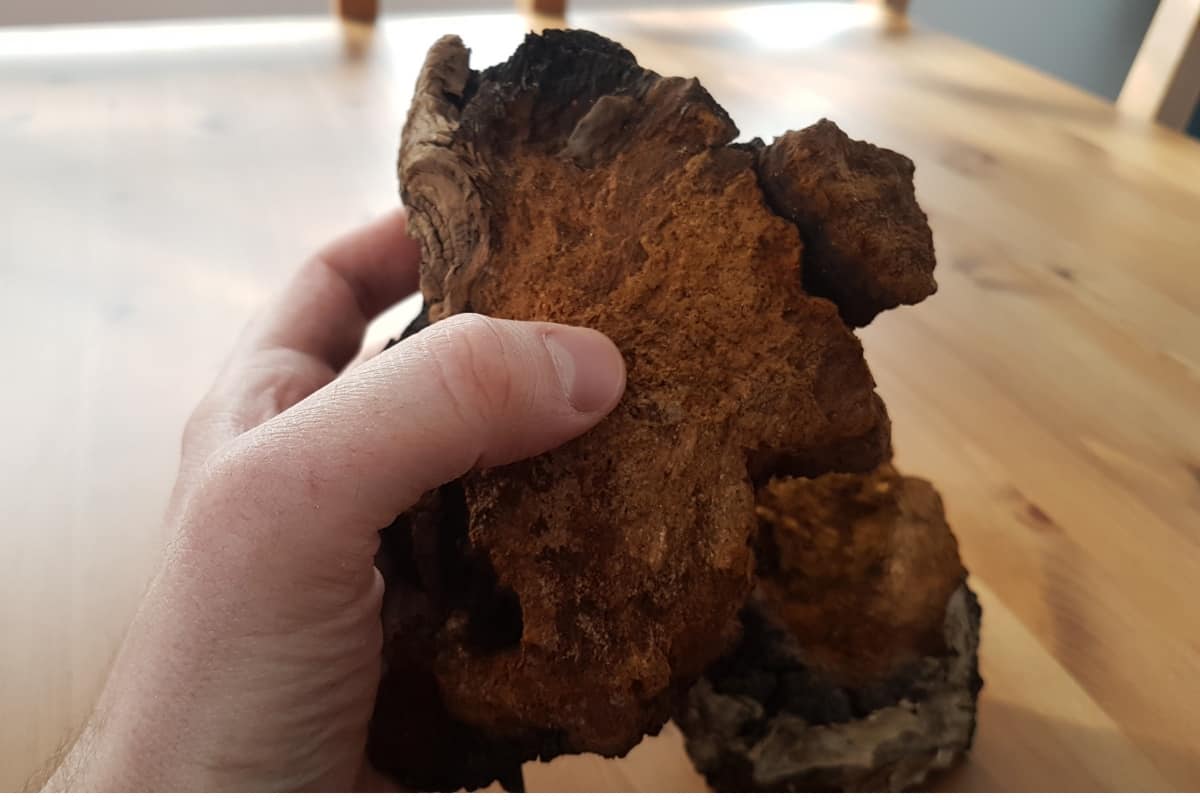
What is Chaga Mushroom
What is referred to when talking about Chaga – and the source of the powerful medicinal compounds– is not the actual fruiting body of the mushroom.
Chaga is actually a mass of mycelium, known as a sclerotia. This strange looking protrusion is rock hard and mostly black in color, due to an extremely high concentration of melanin.
The scientific name of the Chaga Mushroom is Inonotus obliquus. A parasitic fungus, Chaga infects birch trees in the hardwood forests of the Northern hemisphere, and thrives in colder climates. It is slow growing, taking 3-5 years to fully form.
Although it has been used for centuries as a folk remedy for a host of ailments, the use of Chaga mushroom extracts as a powerful health supplement is currently growing in popularity throughout North America, and catching the eye of the scientific community.
Chaga for Immune Support
One of the most interesting benefits of Chaga mushrooms is its ability to modulate the immune system. This means that when the immune system is over-reacting, Chaga is able to calm it down and attenuate the response.
In this way, the mushroom is able to help with reducing allergy symptoms, and is the reason why Chaga has been used to treat auto-immune disorders.
On the other hand, if the immune system is not performing to its full potential, Chaga is able to kick it into gear, helping stave off disease and infection. A well functioning immune system is a cornerstone of overall health, so it’s worthwhile to consider how Chaga might help.
The immune boosting effects of Chaga mushrooms are due to the presence of Beta-D-Glucans, a water soluble compound found within the cell walls of the mushroom. The mechanism by which this works has to do with the way the Beta-D-Glucans interact with the receptors in our immune system- although the exact reason for why this works so well is still unclear.
These Beta-D-Glucans are also what’s responsible for the reported modulating effect on blood pressure and blood sugar level, helping to keep the body in a state of balance.
Chaga as an Anitoxidant
The black outer layer of the Chaga “sclerotium” contains a massively high concentration of melanin. Because of this, extracts which include this part of the mushroom are powerful antioxidants, helping to protect the cells of the body from harmful free-radicals.
These extracts can also help protect the body from other “oxidative” processes, such as cancer, arthritis and aging in general.
Potential Side Effects?
Chaga is well tolerated, and generally regarded as safe. It has been used as a folk medicine for centuries.
That being said, if you are on other medications, have diabetes, or suffer from auto-immune disease, it is advised to first seek out a qualified health practitioner before starting to supplement your diet with Chaga. The same can be said for any medicinal mushroom or natural health product, and Chaga is no exception.
Wild Harvested Chaga
Where and how Chaga grows has a significant impact on the medicinal value of the mushroom. Efforts to cultivate the mushroom have mostly fallen short in an attempt to replicate the benefits of wild harvested Chaga.
“Cultivated” Chaga is typically just a culture of the mycelium grown out on grain or on some other nutrified media. This is largely ineffective for producing a quality supplement.
The reason for this is that many of the beneficial compounds within the mushroom only form because of the parasitic relationship between the Chaga and the host tree, most commonly birch.
For example, betulinic acid is a medicinal compound found in wild harvested Chaga that has anti-viral and anti-inflammatory properties. It also is showing promise as a powerful anti-cancer agent, able to inhibit the growth of cancer cells. The betulinic acid found in Chaga is actually a derivative of betulin, a compound found in birch trees, and is completely absent in cultivated Chaga which is not growing on birch.

How to Identify Chaga
The first step to finding Chaga is to make sure you are looking in the right place. So where does Chaga grow?
Chaga is found in birch populated hardwood forests throughout northern climatic zones. It thrives in the cold climates of Russia, Canada and Northern China. It can also be found in the USA- with the further North you go increasing your chances of finding Chaga.
Chaga grows almost exclusively on birch trees. It has been found to grow on other hardwoods, such as beech or maple, but these instances are rare. In addition, the medicinal value of Chaga that has been harvested from trees other than birch may be entirely different.
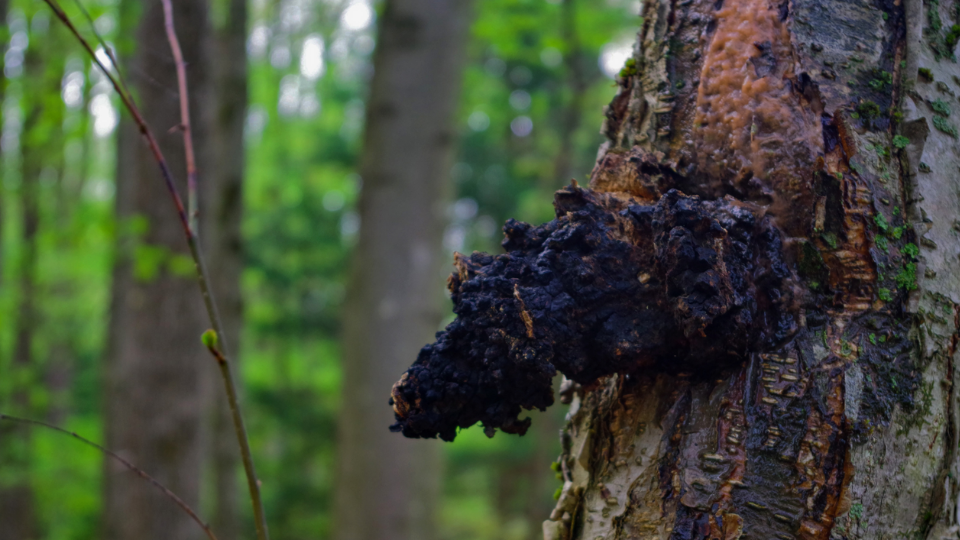
It is pretty easy to recognize a Chaga sclerotium, although new foragers may mistakenly identify a tree burl as Chaga. However, a tree burl is just a normal outgrowth of the tree, usually covered in bark and not indicative of a dying or sick tree.
The burls are usually the same color as the rest of the tree. They can grow quite large, and are often used by carvers and craftsman to make beautiful works of art.
Chaga, on the other hand, is darker than the rest of the tree- almost black- and looks similar charcoal. It is not part of the tree itself, but grows from the tree as a separate body.
Under the hard crusted black outer layer of the sclerotium, Chaga mushroom is a light orange color, which, when fresh, has the consistency of cork. This is almost a dead giveaway that you have indeed found Chaga.
Identifying Chaga
Use the following checklist to see if you have really found Chaga:
If all these conditions are true, you have likely found chaga! Of course, whenever you are harvesting wild edibles, especially any type of mushroom, you want to be 100% confident that you can correctly identify the species. Check out a good guide book, or check additional resources if required. Even better, go out with an experienced forager who can show you exactly what to look for!
Chaga Extracts
Simply consuming ground-up chunks of wild harvested Chaga mushroom is not going to be all that beneficial for you. This is because the active compounds in Chaga are locked up within the cell walls of the mushroom, and need to be properly extracted from the fungus in order to become bio-available.
Cooking the mushroom, or heating it, will break down the cell walls and allow us to pull out the compounds.
This is usually done by either a hot water extract, an alcohol extract or a combination of both.
Hot Water Extract
A hot water extract is the easiest and most common way to pull the beneficial compounds out of the Chaga mushroom. This method will extract the water soluble compounds, which includes Beta-D-Glucans, the compound responsible for the immune boosting effects of Chaga.
This is usually done by cooking the mushrooms in hot water at sub boiling temperatures (~80 degC) for 3-4 hours. The mushroom fiber is then pulled out and the resulting liquid is concentrated and spray dried to be turned into a mushroom extract powder.
Alcohol Extract
Some of the compounds in the Chaga mushroom are not soluble in water, and can be made more available by performing an alcohol extract. Alocohol soluble compounds in Chaga include the phytosterols and the triterpenes, and are thought to mainly responsible for the cholesterol lowering and anti-cancer effects.
An alcohol extract is done by simply soaking the bulk dried Chaga in alcohol for a number of days or weeks. On an industrial scale, an alcohol extract is often done at the same time as a hot water extract by using an alcohol-water mix. The powder is created in the same way, by sending the concentrated liquid though a spray drier.
How to Make Chaga Mushroom Tea
You can easily perform a hot water extract at home using wild harvested Chaga chunks to make an immune boosting Chaga tea. If you don’t have access to wild Chaga, or you don’t feel like tromping through the forest to find it, there are many places that you can find it online.
FreshCap sells a premium hot water extracted chaga mushroom powder that can be added to tea, coffee or smoothies- no extraction needed.
If you are buying Chaga Mushroom Chunks, there are lots of other good sources online if you cannot find it locally.
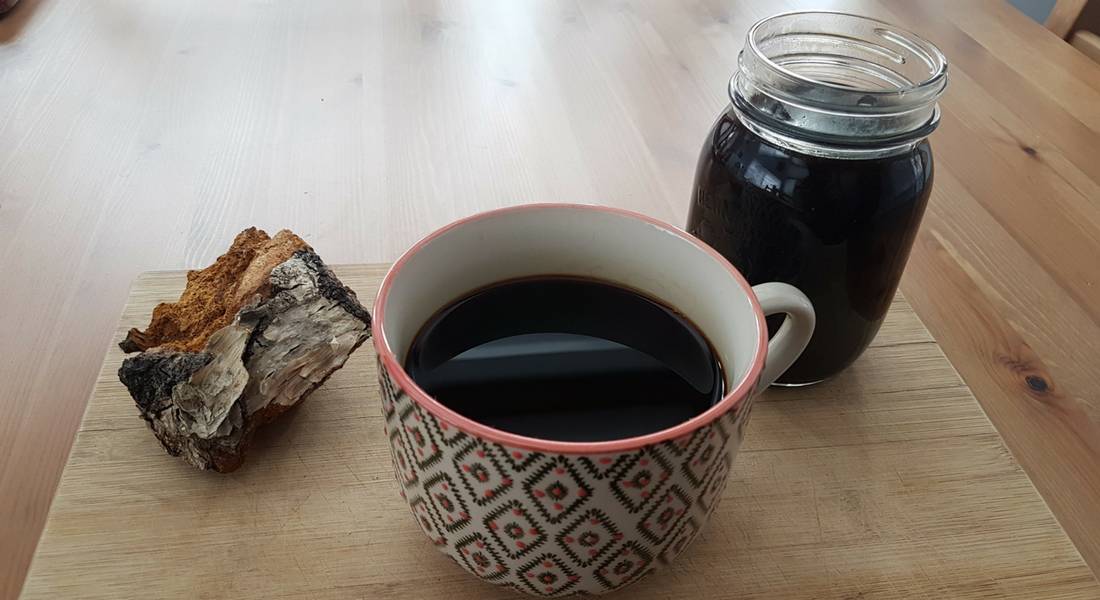
Homemade Chaga Tea
- 3 oz (~90 grams) finely ground chaga powder.
- 1 Gallon Purified Water
- Simmer for 3-4 hours, strain and serve.
Step 1: Pulverize
Chaga is quite hard, and needs to be broken down in order to increase the surface area and more efficiently extract the compounds. To do this, wrap the chaga chunks in a tea towel, place on a hard surface, and smash with a hammer until the chunks are sufficiently pulverized.
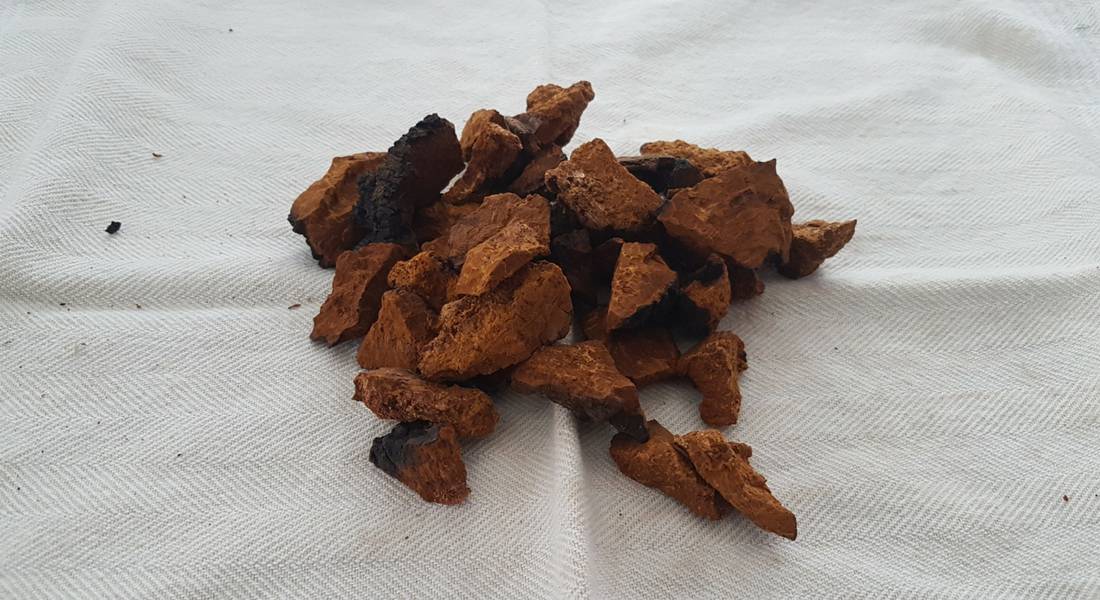
Start with about 3 OZ of Chaga chunks.
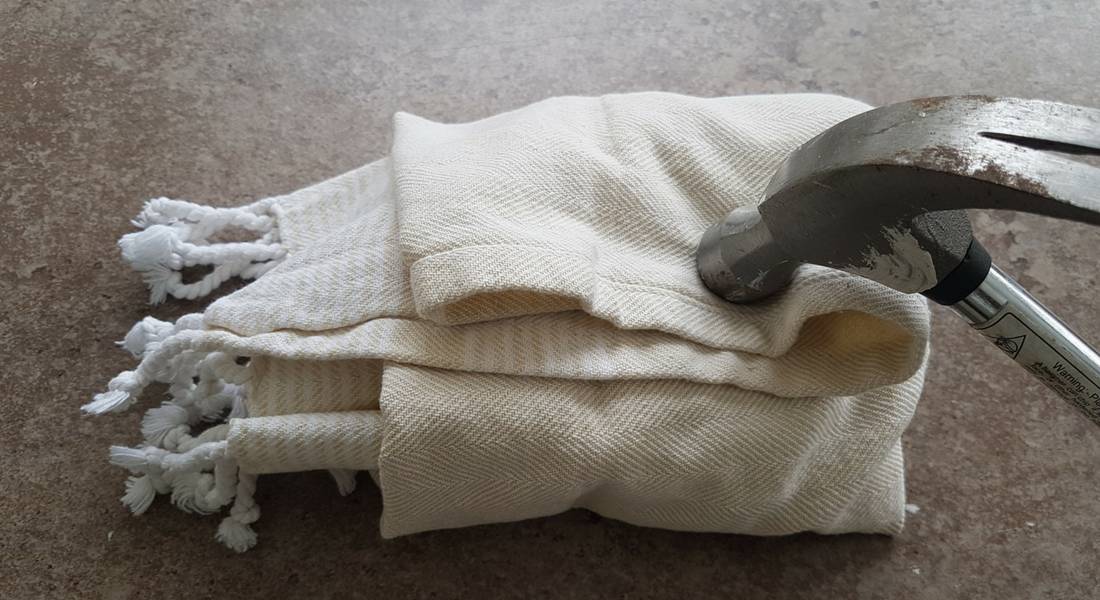
Wrap in a tea towel and pulverize with a hammer
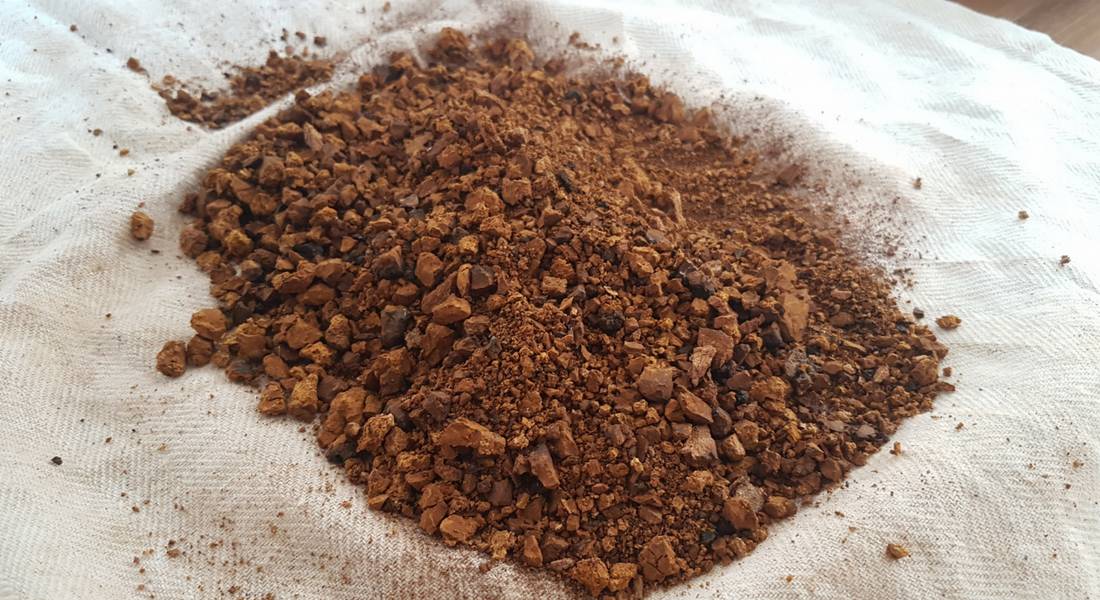
Chaga will be broken down, almost into a powder. Refine it further for better efficiency.
Step 2: Powderize
Further break down the Chaga by turning it into a powder. You can do this with a strong blender or grinder (coffee grinder, vitamix or similar) or by using a mortar and pestle. If you don’t have either of these, then you can skip this step- just keep in mind that the finer the powder, the less time it takes to extract more of the beneficial compounds.
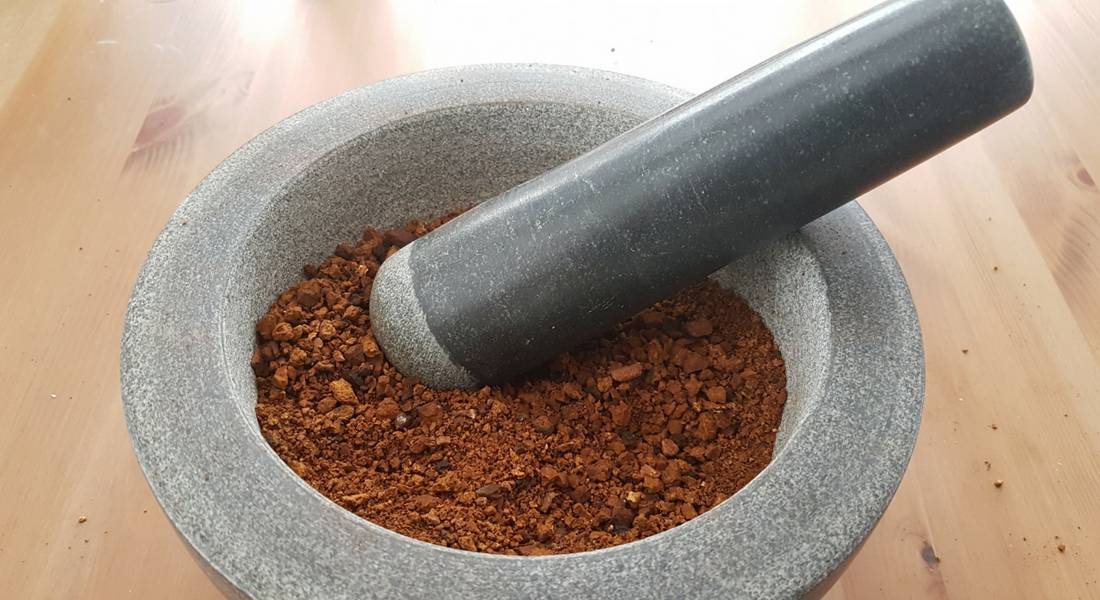
Use a mortar and pestle, or a strong blender, to further break down the Chaga.
Step 3: Boil and Simmer
A good ratio for the extraction is 3 oz of dried powder to 2.5 – 4 liters of water. Drop your Chaga powder into the water, mix it around and bring it to a boil. Once the water is boiling, reduce it to a low simmer.
The amount of time that you should simmer the Chaga depends on how fine of a powder you are using. A good rule of thumb is to simmer for at least three hours. If you are using full Chaga chunks, or have only pulverized with a hammer, consider simmering for up to 4 hours.

Add to 2.5 – 4 litres of water and bring to a boil. Chaga will float at first.
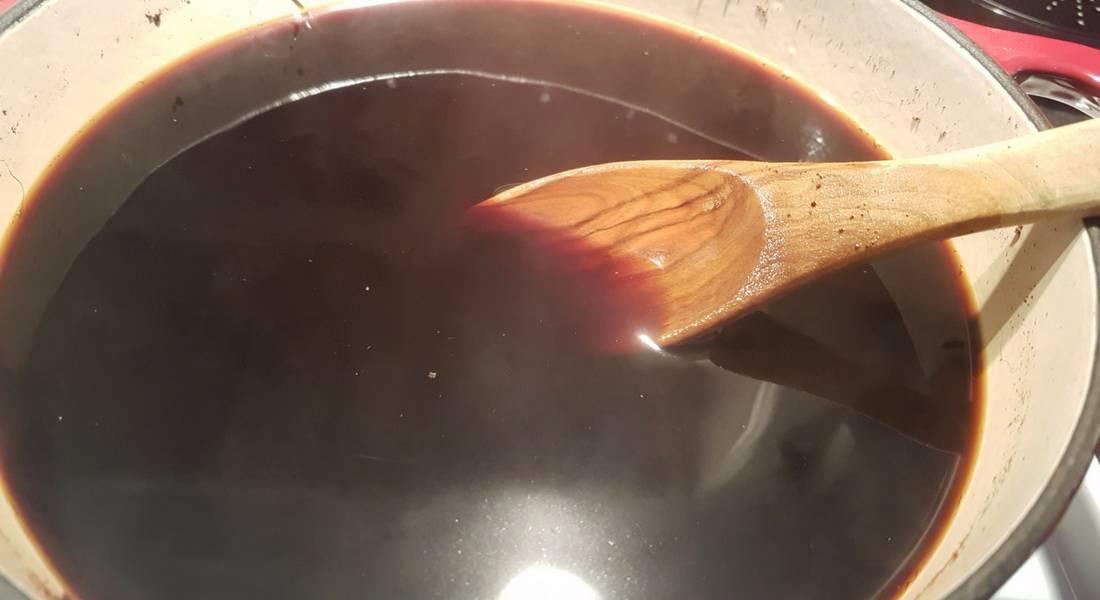
After a few hours on simmer, the Chaga will sink and the water will look like strong dark coffee.
Step 4: Strain, Serve and Store
Once the extraction is complete, strain the liquid through a tea towel, cheese cloth or a fine mesh strainer in order to remove any excess fiber. The resulting liquid should be a dark, rich Chaga tea, full of beneficial compounds. The tea tastes very earthy, and is actually quite enjoyable!
You can enjoy it right away, or place it in the fridge where you can store it for a number of days.
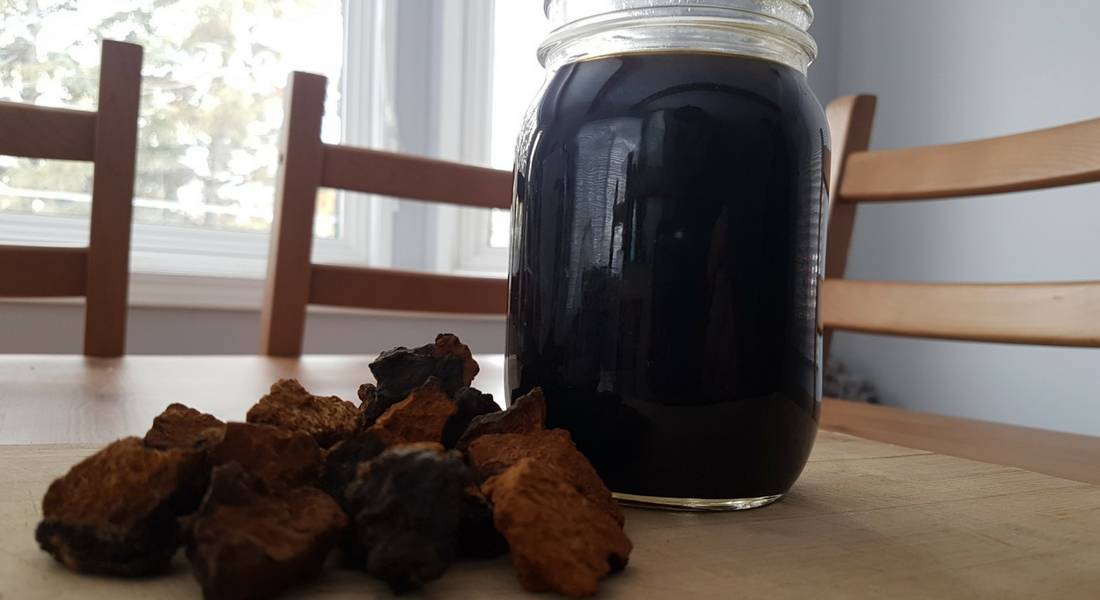
Homemade Alcohol Extract
If you want to get all the beneficial compounds out of the Chaga mushroom (including the sterols and the betulinic acid) you will have to also perform an Alcohol extract.
Luckily, this is quite easy to do at home. Simply place the pulverized Chaga into a mason jar of high-proof alcohol. Vodka works well for this.
Fill the mason jar with alcohol so that it completely covers the Chaga, but leave a little room at the top of the jar for airspace. Leave the jar to sit for up to a month, shaking it every couple of days. Over time, the alcohol soluble compounds will be pulled out of the Chaga and dissolved into the alcohol.
Making a Dual Extract
A dual extract is simply a combination of an alcohol extract and a hot water extract. The best way to make a dual extract is to perform a alcohol extract and a hot water extract in succession and combine the two resulting liquids.
You can use the same mushroom material to perform both extracts, ie. you can use the chaga that is strained off of the hot water extract to do the alcohol extract. This is because the hot water extract won’t be able to remove the alcohol soluble compounds from the Chaga and vice versa. It doesn’t matter in what order you perform the extractions.
Chaga Mushroom Powder Supplement
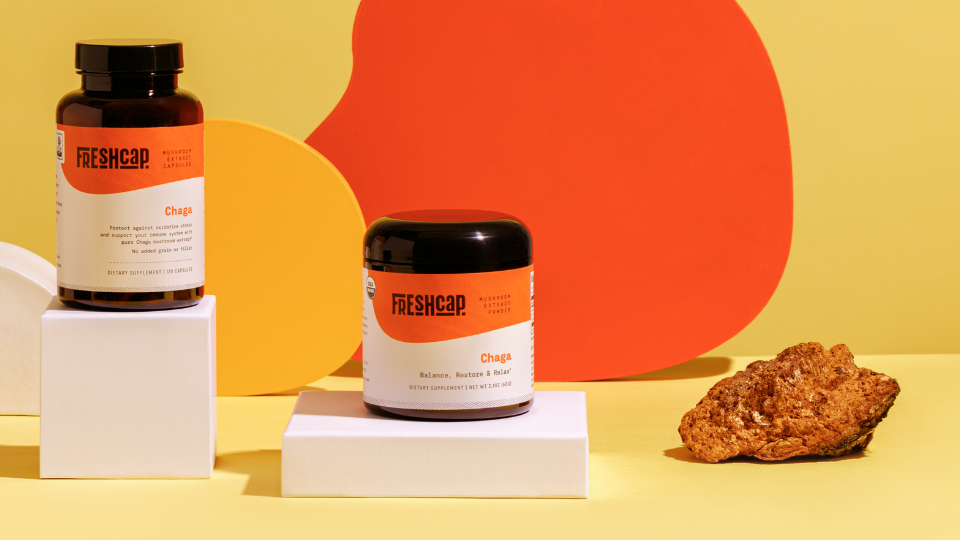
So far, it sure seems like getting some Chaga into your life is a lot of work.
You need to find or buy wild harvested Chaga, pulverize it into a powder, and either cook it for hours on a stove, soak it for months in a jar, or do both.
Luckily there is a much easier way to get your daily dose of Chaga- by using a well prepared Chaga Mushroom extract product.
A properly prepared chaga extract should not require any additional processing. In other words, the beneficial compounds of a Chaga extract should already be bio-available, and can be consumed by simply adding the powder to a smoothie, or a cup of coffee.
A number of different places offer Chaga supplements online, but there are some critically important differences to be aware of before you buy.
Need To Know:
Properly prepared Chaga Mushroom powder (hot water extracts) do not need to be extracted again. Whether powder or pills, they can be consumed right away with no extra prep!
What to Avoid
Not all Chaga mushroom supplements are created equal!
Some supplement companies will only bother to grow the mycelium of the Chaga on grain.
These “mycelium on grain” products don’t have nearly the same amount of beneficial compounds as wild crafted Chaga which has gone through an extraction process.
In fact, some of these “Chaga supplements” are mostly grain starch.
If you feel up to it, go browse some popular Chaga supplement nutrition facts tables, located on the back of the package.
For many of them, there is no way to know how much of the supplement is Chaga with beneficial compounds, and how much is just brown rice, or some other grain. Oats is another popular one.
Many Chaga supplements only list”chaga mycelium” or “myceliated brown rice”, which means it likely they weren’t sourced from wild chaga growing on Birch trees, and do not actually have the same medicinal profile as true Chaga.
Although these labels are clear, it is a little deceptive for the consumer. Bottom line, make sure you know what you’re buying!
Best Chaga Supplements
You’ll want to check to make sure that your Chaga supplement lists some analytically verified levels of Beta-D-Glucans, triterpenes and a low percentage of starch.
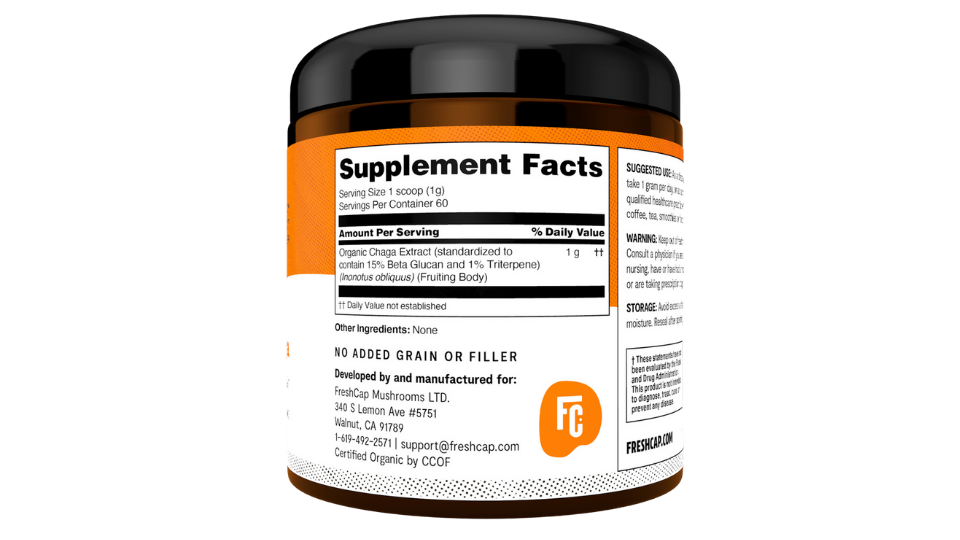
The above label is a good example of what you want to look for. (OK, I am a little biased- but this stuff is important!)
The amount of Beta-D-Glucans is clearly labeled at 15%, and there are no other ingredients. Just pure mushrooms without grain.
Also, the method of extraction is clearly labeled here as a hot water extraction. This powder is ready to be added to smoothies, coffee or tea- no extra processing required.
Chaga For Your Health
Chaga can be used to fend off allergies, to protect your cells from damage, to supercharge your immune system, or just help maintain a better balance of health in the body.
Whether or not it’s harvesting it from the wild and brewing a tea, or taking the easier route and just buying a supplement- we could all benefit from adding a little Chaga to our lives.
It could just be worth a try.
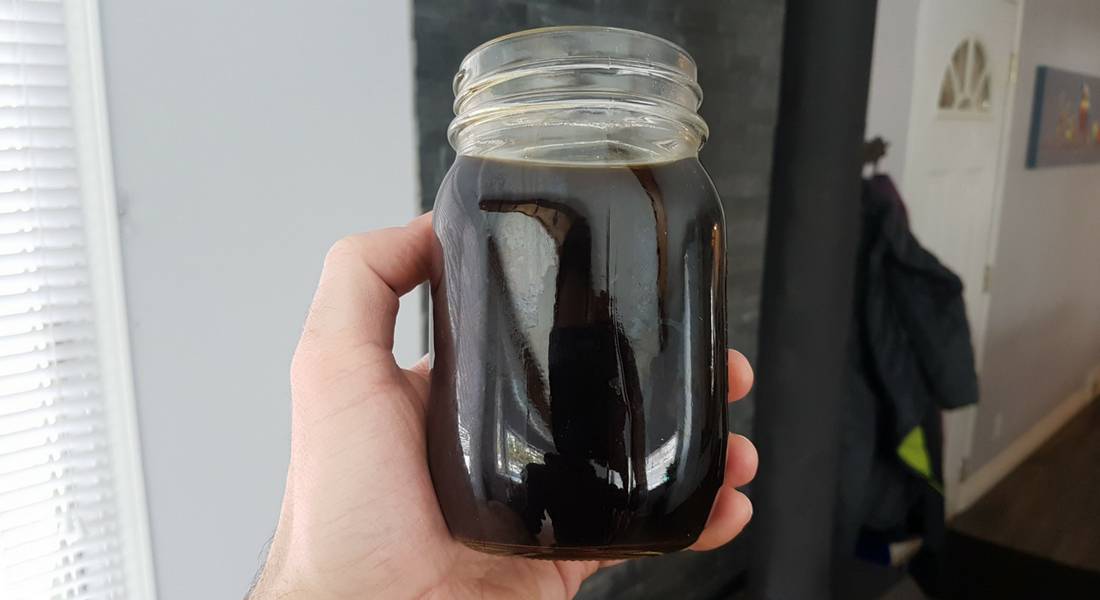
References:
- Lee, Sung & Sun Hwang, Hee & Yun, Jong Won. (2009). Antitumor Activity of Water Extract of a Mushroom, Inonotus obliquus, against HT-29 Human Colon Cancer Cells. Phytotherapy research : PTR. 23. 1784-9. 10.1002/ptr.2836. (read…)
- Mishra, Siddhartha & Kang, Ju-Hee & Choi, Changsun & Hyun Oh, Seung & Kim, Mi. (2011). Orally administered aqueous extract of Inonotus obliquus ameliorates acute inflammation in dextran sulfate sodium (DSS)-induced colitis in mice: P-197.. Inflammatory Bowel Diseases. 17. S71. 10.1097/00054725-201112002-00231. (read…)
- Kim, Yeon-Ran. (2005). Immunomodulatory Activity of the Water Extract from Medicinal Mushroom Inonotus obliquus. Mycobiology. 33. 158-62. 10.4489/MYCO.2005.33.3.158. (read…)
- Sun, Jun-En & Ao, Zong-Hua & Lu, Zhen-Ming & Xu, Zhenghong & Zhang, Xiao-Mei & Dou, Wen-Fang & Xu, Zheng-Hong. (2008). Anti hyperglycemic and antilipidperoxidative effects of dry matter of culture broth of Inonotus obliquus in submerged culture on normal and alloxan-diabetes mice. Journal of ethnopharmacology. 118. 7-13. 10.1016/j.jep.2008.02.030. (read…)
- Najafzadeh, Mojgan & Dominic Reynolds, P & Baumgartner, Adi & Jerwood, David & Anderson, Diana. (2007). Chaga mushroom extract inhibits oxidative DNA damage in lymphocytes of patients with inflammatory bowel disease. BioFactors (Oxford, England). 31. 191-200. 10.1002/biof.5520310306. (read…)


Very informative article! Thank you ☺
Thanks for checking it out! Chaga is aweseome!
Useful article. In our country (Russia), chaga was widely used as before. This article shows that chaga is easily used in tea and other products. It is better to drink chaga, and not to drink from cans and bottles from the store.
Hi there!
I’m a student about to start a study on the anti bacterial/ beneficial properties of chaga, turkey tail, and cordyceps. I bought these products from a health food store and will be growing the mycelium in a lab. What media would you recommend using?
Any other helpful tips are appreciated!
Hey Maddy, that sounds awesome!
Generally, Malt-Yeast Agar is a good place to start, although there are a TON of different agar recipes that you could try.
Best of luck in your studies 🙂
I have prepared the tea as directed, how much should I drink for good maintenance
afraid to drink too much or not enough,
you should have some sort of guide for consumption for different problems
Thank you
marie
Hi Tony, Allison here. I am so in love with mushrooms 🍄
I will be out foraging for Chaga in Maine this year.
Hi Allison! Mushrooms really are amazing- good luck finding your Chaga 🙂
I just found my first chunk of chaga while on a nature walk on a birch in Gaylord Michigan (northern part of the state)! Im so excited! I actually live in southern Michigan. Do you know if it grows that far south?
Hey Tina! I am not 100% sure about southern Michigan, but I wouldn’t be surprised at all! Awesome find 🙂
Hi Tony,
I have been searching for relief from arthritis pain that is not a prescribed chemical! I have tried many things. I recently got my first bag of Chaga, put a spoon full in my morning coffee. I have to tell you the difference in how I feel is startling! By the end of the day I could really feel it and I slept good for the first time in a couple of years! I didn’t expect this dramatic of a change! I am now a Chaga believer! Thanks and great website!
That is so awesome to hear! Great that Chaga has been helping you 🙂 The power of mushrooms is real!
Hi Tony. Do you ever grow Chaga?
hey there! no, real Chaga is wild harvested. There are some that are experimenting with growing outdoors by inoculating live birch trees with Chaga and then returning many years later to harvest, but I do not have experience with this.
Great Post!! Thanks for sharing this informative information.